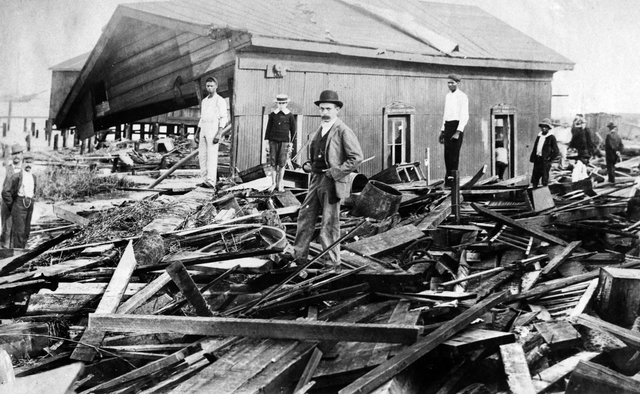We are now used to hearing about once-in-a-1,000-year floods. The fact that we are used to hearing about them tells us that they will no longer be rare. In fact, since climate change is at the heart of these events and continues unabated, we can expect that storms practically everywhere will get worse.
That’s because as average atmospheric temperatures continue to rise, the atmosphere will hold more and more water vapor. And, as more and more heat gets stored in the oceans, they will provide more and more energy to the storms which pass over them.
Of course, “once in a 1,000 years” only means that the chances are one in a thousand that such a storm will occur this year or the next. In fact, this phrase doesn’t actually reflect weather records. As Vox points out, we don’t have reliable records going back that far. We have only about 100 years of such records for the United States, and then not for every locale. Beyond 100 years we are guessing about flood severity based on indirect evidence.
Instead of planning based on such long intervals, we will be faced with a moving target—actually a moving target of probabilities—probabilities which are rising in unknown ways at unknown speeds. Even with all of our instruments, models and scientists we cannot keep up with the changing dynamics of an atmosphere continually perturbed by climate change.
But we know the general direction; and what should terrify us is that we cannot really calculate just how bad things will get.
There is a notion afoot that we will simply adapt to climate change. How does one “adapt” to hurricanes such as Harvey and Irma if they become frequent events? If large parts of the industrial plant are shut down for weeks at a time after such a storm—as refineries producing ethylene, the basis for most plastics will likely be after Harvey—how well will the industrial infrastructure function?
We could harden our industrial, commercial and public infrastructure against such storms, but a move like this would be tricky to execute: What exactly should each installation do? And, such a move would be tremendously costly. Besides, as climate change continues to worsen, to what set of conditions are we supposed to adapt our infrastructure assuming we would be willing to spend the money?
Even if we were to decide to spend the money, if the homes of those working in the industrial, commercial and public infrastructure are destroyed or rendered uninhabitable, who is going to show up to work to run those installations after destructive storms?
Adaptation is going to be much harder than simply using more air-conditioning during the increasingly hot weather. (And, of course, in most locations using more air-conditioning will simply lead to more fossil-fuel use at electric generating plants; that will only exacerbate the problem.)
What Harvey and Irma are making clear is that the infrastructure we have built was built for a different climate and is surprisingly fragile in the face of climate change. When some scientists say that our civilization is at risk, this is what they mean. The things we expect to work and work reliably won’t. This will include agriculture as climate change turns increasingly negative for food production worldwide.
Without a coherent plan to address climate change, the world will simply lurch from one climate-induced crisis to another. A focus on the immediate disaster will only make things worse as we do little or nothing to adapt to or to mitigate the warming of the globe.
That’s the trajectory that the do-nothing crowd has now put us on. Are we so politically hamstrung and propagandized that we will simply allow this? The aftermath of two of the worst hurricanes ever will provide some clues.
Photo: After the Great Hurricane of 1896 that struck the Gulf and Atlantic coasts of Florida. “This image shows the devastation caused by the Great Hurricane of 1896 that struck the Gulf and Atlantic coasts of Florida. With its 2,200-kilometer coastline, Florida is the U.S. state most vulnerable to these storms. More than 450 recorded tropical storms and hurricanes have reached its shores since European exploration began. The hurricane of September 1896 destroyed most of the residential area of the town of Cedar Key on the upper west coast of the Florida peninsula, killing dozens of residents and destroying most of Cedar Key’s industries. Before making landfall, the storm and its tidal surge overwhelmed more than 100 sponging boats, killing untold numbers of crewmen. The hurricane then crossed the peninsula, leaving a wide swath of destruction until it reached the Atlantic coast at Fernandina, before heading north to Virginia. This image shows survivors, both white and black, in Fernandina, standing atop mounds of rubble, still seemingly shocked by the destruction.” Via Wikimedia Commons.






